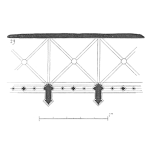
Once word got out that I was taking graduate-level courses in statistics, I dreaded the knock on the door. Colleagues, some of which I knew and others from some far reach of the company, would ask if I could take a look at their data. I didn’t learn the necessary first steps with a stack of data in class.
I’ve lost count of the number of data sets I’ve reviewed and analyzed. I know there are important considerations and questions before creating the first plot. Let’s review the essential first steps you should take when presented with data.
[Read more…]












 Ask a question or send along a comment.
Please login to view and use the contact form.
Ask a question or send along a comment.
Please login to view and use the contact form.